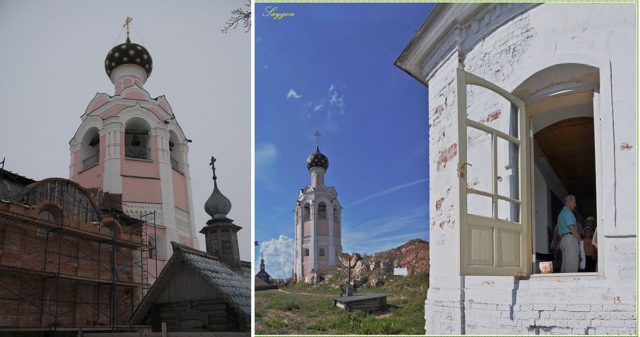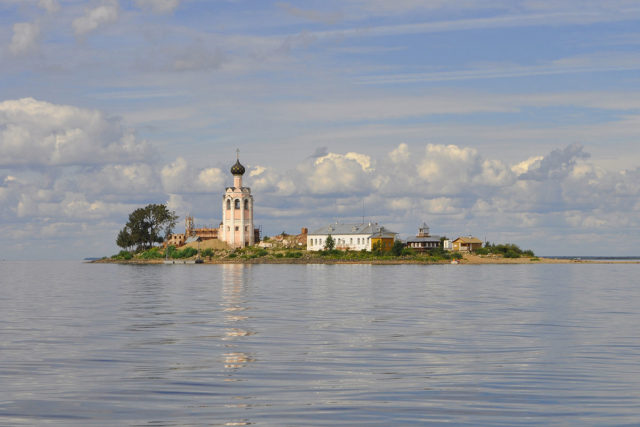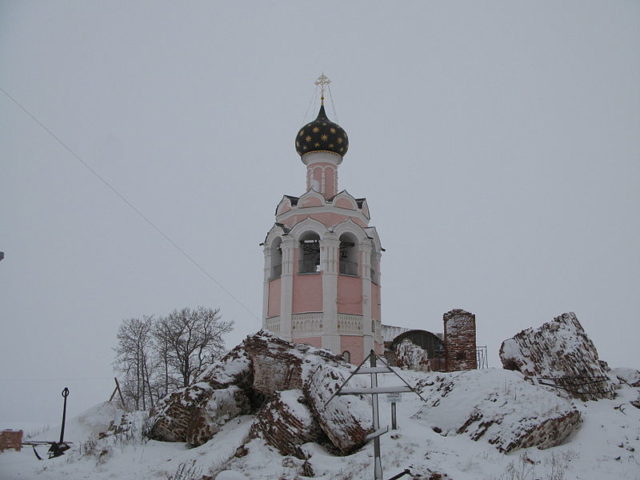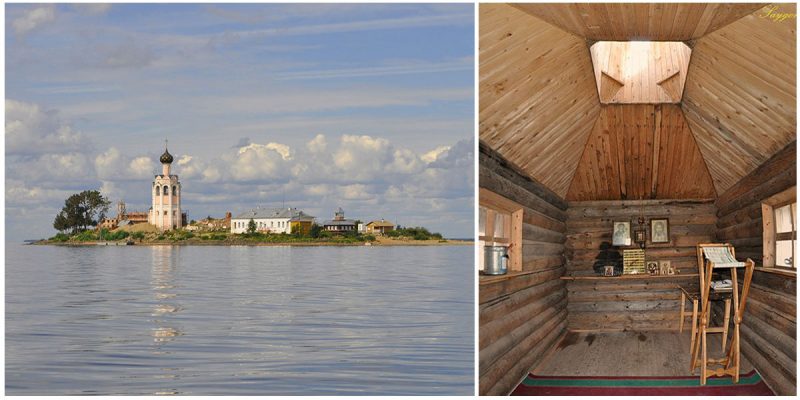Situated on a small eponymous island in the very center of the Kubensky Lake, in Ust-Kubinsky District of Vologda Oblast, about 500 kilometers north of Moscow, Kamenny Monastery (literally “Savior on Stone”) is considered the first stone temple in the north of Russia and one of the first in this region.
The lake is known for its inclement weather and frequent storms so it is believed that during one such storm in 1269, Duke Gleb of Beloozero was cast ashore on this island where he found a small community of twenty-three hermits.



When the Prince learned that the hermits were poor and couldn’t afford to have a church, he ordered to build a church in the name of “Transfiguration of Our Saviour” and wooden cells. But it wasn’t until two hundred years later that a four-pillared stone cathedral was erected on the island.
The monastery was quite rich, owning seven larger villages, four average villages, and 98 small villages, in addition to two salt pans in Totma and two branches in Vologda. The only post-medieval buildings on the island were an inn and two lighthouses, built for the needs of the monastery in the 1870s.


In 1925, the Soviet government closed down the monastery and the buildings were adapted to a youth detention center for minor delinquents but this establishment proved a failure and by 1937 the colony was shut down and the island has been deserted ever since.
Financed by the Russian program Heritage, a restoration work on the monastery began in 1991 and it was undertaken by Vologda resident Alexander Nikolayevich Pligin, his family, and all their volunteer assistants. Since 1995 the island has been frequently visited by the acting bishop of Vologda and Veliky Ustyug, Maximilian.



Today, the monastery is considered one of the main pilgrimage centers of the region.
As of 2015, the only building marking the spot of the historic monastery is the church belltower from the 1540s, which is now being repaired by a team of enthusiasts from Vologda and Moscow.
